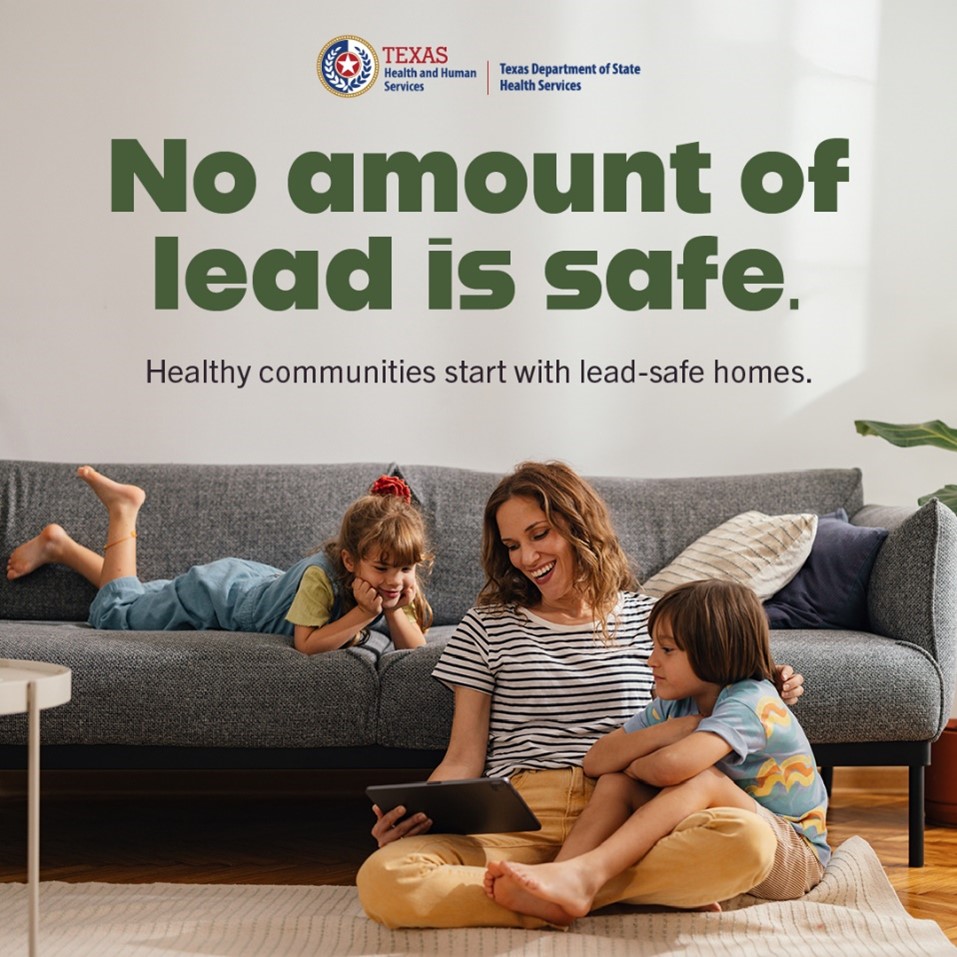Blood Lead Surveillance Branch
National Lead Poisoning Prevention Week 2025
National Lead Poisoning Prevention Week (NLPPW) 2025 falls from October 19 through October 26. The theme this year is “Healthy Communities Start with Lead-Safe Homes” and highlight the importance of safe living environments for our children and to raise awareness and promote lead-safe practices within our communities. We can start these practices by following three simple steps:
1). Learn the facts: Lead is still a problem that we see in many communities today. There are many ways to be exposed to lead but there are also ways to protect your family and community.
2). Know the risks: Lead exposure can lead to serious harmful effects for a child such as brain and nervous system damage, delayed development, learning and behavioral problems, plus hearing and speech problems if it’s not caught early on.
3). Getting children tested: A blood lead test is the best way to find out if your child has lead poisoning. Talk to your healthcare provider about getting a blood lead test if you are worried that your child has been exposed to lead.
One of the key takeaways during NLPPW is to get your child tested. A blood test is the best way to find out if your child has lead poisoning. Children who are enrolled in Texas Health Steps/Medicaid are required to be tested for lead at the ages of 12 and 24 months of age, up to the age of 6 if there is no previous test on file. If your child is not enrolled in Texas Health Steps and you are unsure if your child needs to be tested for lead there are two simple ways to gauge if a lead test is needed. You can complete a simple Lead Risk Questionnaire to determine if there has been a potential exposure, or you can follow the Blood Lead Screening Guidelines form and see if you live in a targeted zip code. If you have any concerns about lead poisoning, ask your childcare provider about getting a blood lead test. For lead related resources please visit our Educational Materials page.

The Blood Lead Surveillance Branch is made up of two programs:
- The Texas Childhood Lead Poisoning Prevention Program
- The Adult Blood Lead Epidemiology and Surveillance Program
The Texas Childhood Lead Poisoning Prevention Program (TXCLPPP) maintains a surveillance system of blood lead results on children younger than 15 years of age. Texas law requires reporting of blood lead tests, elevated and non-elevated, for children younger than 15 years of age. Physicians, laboratories, hospitals, clinics, and other healthcare facilities must report all blood lead tests to the Texas Child Lead Registry.
The Adult Blood Lead Epidemiology and Surveillance Program (ABLES) maintains a surveillance system of blood lead test results on individuals 15 years of age and older. Laboratories and physicians are required by the Texas Reportable Occupational Conditions Act to report all blood lead levels.
General Lead Exposure Information
|
|
|
|
|
Last updated October 28, 2025





